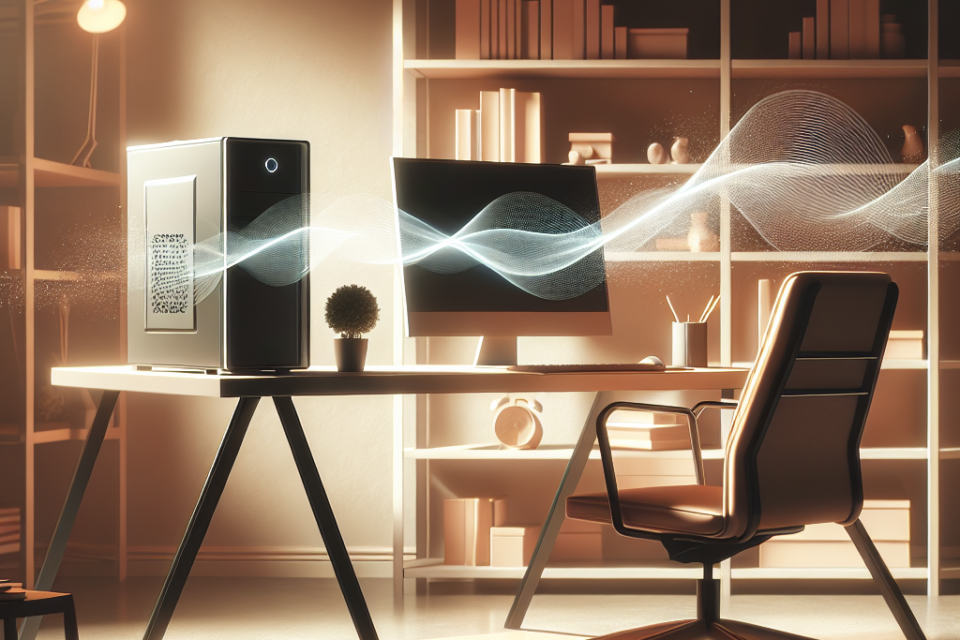How do I build a quiet PC for home or office use?

Building a quiet PC for home or office use isn\’t just about purchasing the latest and greatest components. It\’s about thoughtfully selecting parts that prioritize low noise and optimizing their configuration. A quiet PC can significantly improve your working or gaming environment, helping you focus better and enjoy a peaceful atmosphere.
Essential Components for a Quiet PC
| Component | Considerations |
|---|---|
| Case | Soundproofing and airflow design |
| Power Supply Unit (PSU) | Efficiency and fan noise |
| Central Processing Unit (CPU) | Low TDP and efficient cooling solutions |
| Graphics Processing Unit (GPU) | Passive or semi-passive cooling |
| Cooling System | Silent fans and/or water cooling |
| Storage | Solid State Drives (SSD) over Hard Disk Drives (HDD) |
Choosing the Right Case
Soundproof Cases: The case plays a significant role in dampening noise. Look for cases with sound-dampening materials such as foam and rubber grommets. These materials absorb vibrations and reduce noise levels.
Airflow Design: A well-ventilated case helps in dispersing heat efficiently, reducing the need for fans to run at high speeds. Opt for a case with multiple fans and air filters to keep dust at bay.
Selecting a Quiet Power Supply Unit (PSU)
Efficiency: PSUs with higher efficiency ratings (80 Plus Gold or Platinum) generate less heat, which in turn allows the built-in fan to operate at lower speeds, producing less noise.
Fan Noise: Some PSUs come with a hybrid fan mode, allowing the fan to remain off or spin at low speeds under low loads. Choose a PSU with this feature to minimize noise.
Choosing a Silent CPU
Low Thermal Design Power (TDP): CPUs with lower TDP ratings generate less heat, which means less cooling is required. This reduces the noise from cooling fans.
Efficient Cooling Solutions: Consider using large heatsinks or all-in-one liquid cooling solutions. These tend to be quieter than stock air coolers.
Silent Graphics Processing Unit (GPU)
Passive or Semi-Passive Cooling: GPUs with passive cooling have no fans and are entirely silent. However, they may not be suitable for high-performance tasks. Semi-passive cooling GPUs keep the fans off during low loads and activate them only when necessary.
Implementing a Quiet Cooling System
Silent Fans: Invest in quality, low-noise fans. Fans with larger diameters generally move more air at lower rotational speeds, producing less noise.
Water Cooling: All-in-one (AIO) water coolers can be quieter than air coolers, especially those with high-quality, low-noise fans.
Choosing Silent Storage
Solid State Drives (SSDs): SSDs have no moving parts and are entirely silent, unlike traditional Hard Disk Drives (HDDs), which produce noise when spinning.
Additional Tips for Building a Quiet PC
- Fan Speed Controllers: Use fan speed controllers to adjust the fan speeds according to your needs.
- Rubber Mounts: Utilize rubber mounts for hard drives, fans, and other components to minimize vibrations.
- Cable Management: Proper cable management enhances airflow, reducing the need for fans to work harder.
Conclusion
Building a quiet PC for home or office use is achievable with thoughtful component selection and configuration. By investing in soundproof cases, efficient cooling systems, and silent storage options, you can enjoy a peaceful and productive workspace. Remember to pay attention to each component\’s noise levels and heat generation to achieve the quietest setup possible.
